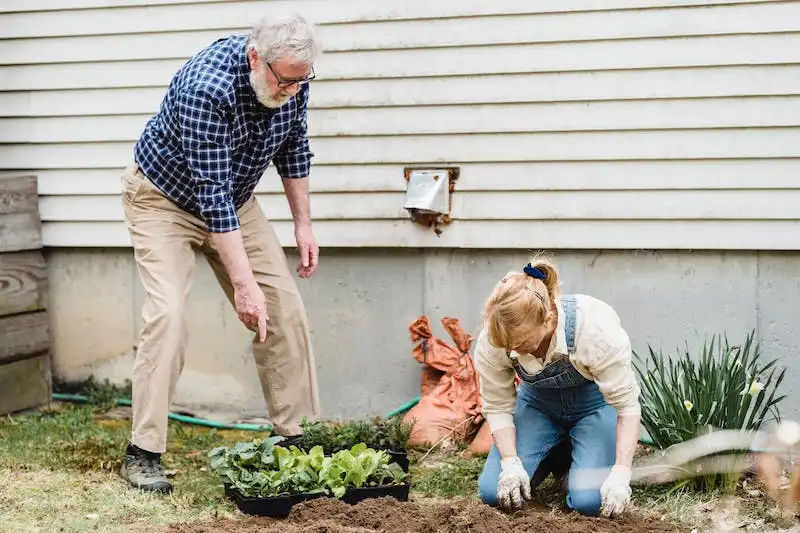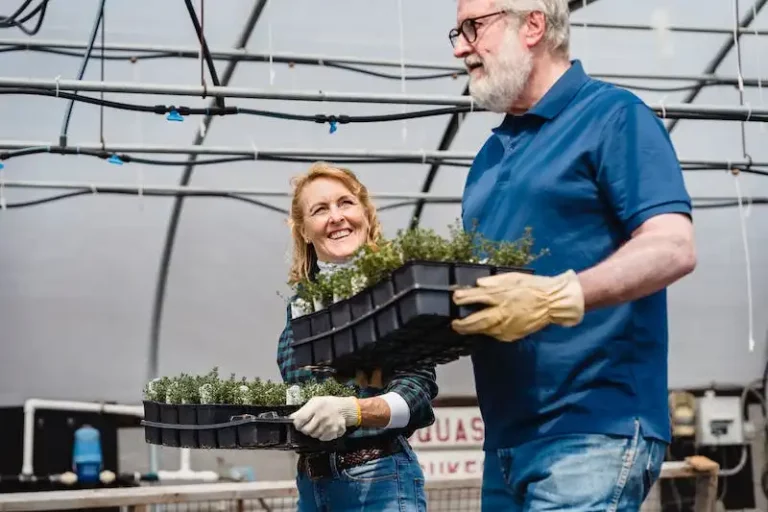Growing sunflowers is a rewarding and enjoyable experience. These vibrant and towering plants can add a touch of beauty and sunshine to any garden. Whether you are a seasoned gardener or a beginner, with a little care and attention, you can successfully grow sunflowers and enjoy their stunning blooms. In this article, we will explore some tips and techniques to help you in your sunflower-growing journey.
Choosing the Right Variety: Before you start planting sunflowers, it is important to choose the right variety. Sunflowers come in various sizes, colors, and petal arrangements. Some common varieties include the tall and vigorous “Giant” sunflowers, the ornamental “Teddy Bear” sunflowers with their fluffy petals, and the vivid yellow “Harris” sunflowers. Depending on your preferences, you can choose a variety that suits your garden and aesthetic taste.
Site Selection: Sunflowers thrive in full sun, so it is important to choose a sunny spot in your garden. They can tolerate a wide range of soil conditions but prefer well-drained loam soil. Make sure the site is not prone to waterlogging, as waterlogged soil can harm the sunflower roots. Additionally, consider the height and size of the sunflowers you are planning to grow. Plant them towards the back of your garden or against a wall to avoid shading smaller plants.
Planting: Sunflowers can be grown from seeds or seedlings. If you choose to grow from seeds, sow them directly into the soil in late spring or early summer, after the danger of frost has passed. Sow the seeds about half an inch deep and keep them moist. Germination usually takes 7-14 days. If you want to get a head start, you can start the seeds indoors in containers and transplant them later. Just make sure to harden off the seedlings before moving them outdoors.
Feeding and Watering: Once the sunflowers are established, they require regular feeding and watering. Use a balanced fertilizer according to the package instructions to provide essential nutrients. Water deeply and consistently, especially during dry spells, to keep the soil evenly moist. Be careful not to overwater, as sunflowers prefer slightly drier conditions. Avoid wetting the leaves to prevent diseases and fungal growth.
Support and Care: As sunflowers grow taller, they may require support to prevent them from toppling over. Use stakes or a stepladder to provide support to the stems. Additionally, keep an eye out for weeds and remove them regularly to ensure the sunflowers have access to all the nutrients. Protect the sunflowers from pests, such as birds and insects, by using netting or applying insecticide if necessary.
Harvesting: The time to harvest sunflowers depends on the variety you choose. The petals of the sunflower bloom starting from the outer edge and gradually move towards the center. Harvest the sunflowers when the petals are fully opened and the center disc has turned dark. Cut them with a sharp knife, leaving a few inches of stem attached. Place them in a vase filled with water and enjoy their beauty indoors.
With these tips and techniques, you are well-equipped to grow sunflowers successfully. The key is to provide them with the right conditions, such as full sun, well-drained soil, and regular feeding and watering. By following these guidelines, you can enjoy a beautiful garden filled with vibrant sunflowers.
How to Grow Sunflowers
Growing sunflowers can be a fun and rewarding experience. These beautiful, tall flowers can add a touch of sunshine to any garden. Whether you’re a seasoned gardener or a beginner, these easy steps will guide you on how to successfully grow sunflowers.
| Step 1: Choose the Right Location | Step 2: Prepare the Soil |
| Find a site that receives full sun for most of the day. Sunflowers are true sun lovers and will thrive in direct sunlight. | Sunflowers prefer nutrient-rich, well-drained soil. Before planting, amend the soil with compost or well-rotted manure to provide the plants with the nutrients they need. |
Step 3: Planting
Plant your sunflower seeds directly into the soil once the danger of frost has passed, usually in late spring or early summer. Follow the instructions on the seed packet for optimal spacing and planting depth. Sunflowers will grow quickly, so be sure to leave enough space between each plant.
Step 4: Watering and Caring for Sunflowers
Water the sunflowers regularly, especially during dry periods. Aim to keep the soil consistently moist but not waterlogged. Sunflowers are fairly drought-tolerant but will grow best with consistent watering.
Throughout the growing season, monitor for pests such as deer, rabbits, and insects. Consider erecting a fence or using non-toxic pest deterrents to protect your sunflowers. If you notice any damaged leaves or stalks, quickly remove them to prevent further damage.
Fertilizing sunflowers is generally not necessary unless your soil is lacking in nutrients. If needed, apply a balanced fertilizer according to the instructions on the package. Be careful not to over-fertilize, as this can lead to excessively tall plants that may become top-heavy and prone to tipping.
Step 5: Supporting Tall Varieties
As your sunflowers grow taller, they may require support to prevent them from toppling over. Install stakes or a trellis near the base of the plant and gently tie the main stalk to the support, taking care not to damage the stem.
Step 6: Harvesting Sunflowers
Harvest your sunflowers when the flower heads have fully bloomed and the yellow petals have started to curl inward. Cut the flower heads from the stem, leaving a few inches of stalk attached.
Sunflower seeds can be eaten as a snack or used for planting again the following year. To save the seeds, hang the cut flower heads in a well-ventilated area and let them dry completely. Once dry, gently remove the seeds and store in an airtight container.
Growing sunflowers is a rewarding endeavor that can brighten up any garden. With proper care and attention, you’ll be able to enjoy the beauty of these majestic flowers and maybe even harvest some delicious snacks along the way!
7 Quick Tips for Growing Sunflowers
- Choose the right variety
- Plant in a sunny spot
- Provide well-drained soil
- Water regularly, but don’t overdo it
- Protect from pests and weeds
- Support tall sunflower stalks with stakes or trellises
- Harvest and enjoy the beautiful blooms
Growing sunflowers can be a rewarding and enjoyable experience for any gardener. Whether you’re a beginner or an experienced gardener, these quick tips will help you have successful sunflower plants.
1. Choose the right variety: Sunflowers come in many different sizes and colors. Decide what you want to grow based on the space you have available and the look you’re going for. Some popular varieties include dwarf, giant, and teddy bear sunflowers.
2. Plant in a sunny spot: Sunflowers are known for their love of sunlight. Make sure to choose a location in your garden that receives full sun for most of the day. This will ensure that your sunflowers get the light they need to grow and bloom.
3. Provide well-drained soil: Sunflowers don’t like to have wet feet, so make sure to plant them in soil that drains well. If you have heavy clay soils, consider adding compost or sand to improve drainage.
4. Water regularly, but don’t overdo it: Sunflowers need regular watering to stay hydrated, especially during dry periods. However, overwatering can lead to root rot and other problems. Water deeply once a week or when the top inch of soil feels dry.
5. Protect from pests and weeds: While sunflowers are generally low-maintenance, they can be susceptible to aphids and other pests. Keep an eye out for any signs of damage and take action if necessary. Regular weeding also helps to keep your sunflower garden healthy and weed-free.
6. Support tall sunflower stalks with stakes or trellises: Some sunflower varieties can grow to be quite tall. To prevent them from toppling over, use stakes or trellises to provide support. This will ensure that your sunflowers stay upright and showcase their beautiful heads.
7. Harvest and enjoy the beautiful blooms: Once your sunflowers are blooming, it’s time to enjoy the fruits of your labor. Cut the blooms when the petals are fully open and place them in a vase with water. You can also save the seeds for future planting or simply leave them for wildlife to enjoy.
With these quick tips, you’ll be well on your way to growing stunning sunflowers in your garden. Remember, sunflowers are easy to care for and can make a great addition to any backyard.
Choosing Your Sunflower Seed Varieties
When it comes to growing sunflowers, there are a wide variety of seed options to consider. The first thing to think about is the height of the sunflowers you want to grow. Sunflowers come in many different sizes, but if you’re looking for the tallest and most impressive plants, you’ll want to choose a variety that is known for its height.
Another consideration is the color of the sunflowers. While the classic yellow sunflowers are always a popular choice, there are also varieties that come in shades of red, orange, and even purple. Consider what colors will best complement your garden or landscape and select varieties accordingly.
When choosing your sunflower seeds, read the package carefully to ensure that you’re getting the type of seeds you want. Some sunflowers are better suited for eating, while others are mainly grown for their beautiful blooms. If you’re planning to munch on sunflower seeds, select a variety that is known for producing delicious and substantial seeds.
Before planting your sunflower seeds, it’s important to prepare the soil. Sunflowers prefer well-drained soil, so make sure your planting area has good drainage. You can add organic matter, such as compost or aged manure, to improve the soil’s fertility. Additionally, sunflowers are heavy feeders, so applying a balanced fertilizer throughout the growing season is essential for their health and growth.
When it’s time to plant your sunflower seeds, choose a sunny location in your garden. Sunflowers thrive in full sun, so make sure the area gets at least six to eight hours of direct sunlight each day. The soil should be relatively deep and loose, allowing the sunflower roots to spread and anchor the tall stalks.
Consider mulching around the sunflower plants to help retain moisture and suppress weeds. Mulching also helps to keep the soil temperature cooler, which is important during hot weather. Additionally, mulch can act as a barrier for crawling insects, preventing them from reaching the sunflower stalks.
When selecting your sunflower seed varieties, keep in mind the specific pests that may be a problem in your area. Sunflowers can attract various insects, including aphids and beetles. If you’re concerned about insect damage, choose a variety that is known to be more resistant to these pests.
It’s also important to consider any wildlife that may be present in your garden. Sunflower seeds are a favorite snack for birds, rabbits, and squirrels. If you’re worried about these creatures feasting on your sunflowers, choose varieties with thicker, tougher shells that may be more difficult for them to crack open.
If you want to attract pollinators to your garden, consider selecting sunflower varieties that are known to be attractive to bees and butterflies. Sunflowers have a large disk in the center of the flower that provides a platform for these insects to land on.
Last but not least, don’t forget to consider the timing of your sunflower planting. Sunflowers are generally planted in the spring after the danger of frost has passed. However, you can also plant sunflowers in the summer for a late-season bloom. Keep in mind that sunflowers take a while to mature, so if you’re looking for a quick harvest, you may need to choose smaller varieties or consider planting earlier in the season.
In conclusion, choosing the right sunflower seed varieties is an important first step in growing healthy and beautiful sunflowers. Consider factors like height, color, seed type, soil conditions, pest resistance, and wildlife preferences when selecting your varieties. Whether you’re going for the tallest and most impressive sunflowers or looking to attract pollinators to your garden, there are plenty of options to choose from. Happy gardening!




